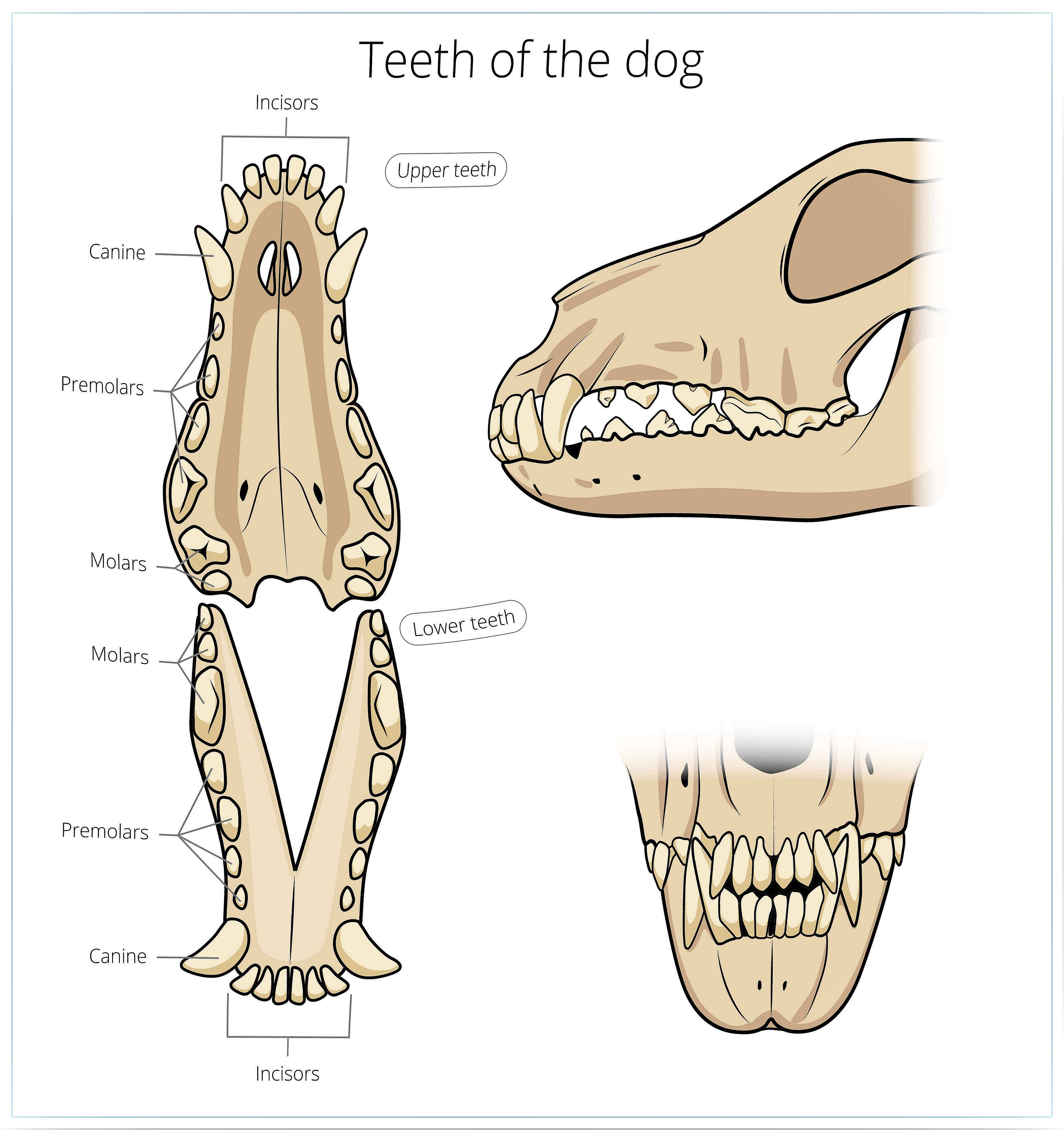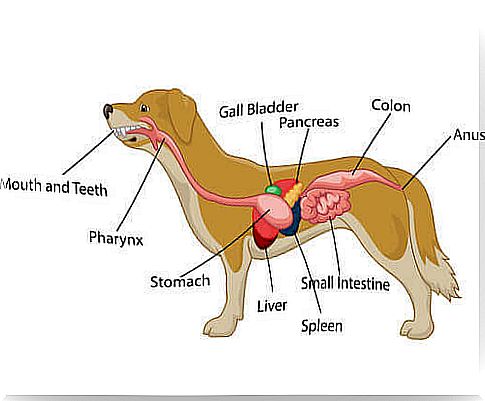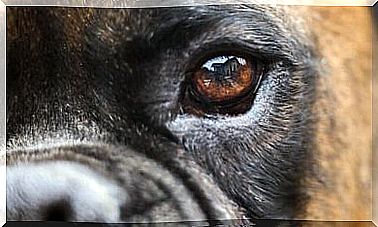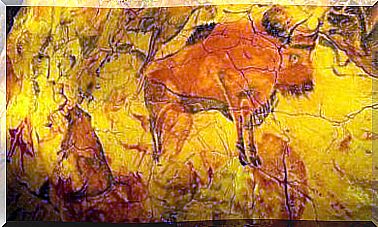The Digestive System Of Dogs

Currently, dogs that live in homes are fed rations for their species, but in many cases this diet is complemented with other types of food, many of them aimed at humans. Is the dog’s digestive system prepared for this type of food?
It seems that dogs can eat anything, although they eventually develop liver or kidney problems that we will hardly ever relate to inadequate nutrition.
How is the digestive system of dogs?
Dogs’ digestive system is primarily designed for meat consumption. It is formed by the digestive tract, which starts with the mouth and later divides into the esophagus, stomach, small intestine, and large intestine.
In addition, we find the adnexal glands such as the liver, pancreas and gallbladder.
Macroscopically there aren’t many differences, but there are some very descriptive ones, like the teeth and the length of the gut, specifically the size of the small intestine.
All dogs, in adulthood, have the same number and types of teeth, totaling 42. These are:
- 12 incisors
- 4 canines
- 16 premolars
- 10 molars

Despite having the same number of teeth, the bite varies. So some dogs close their mouths by putting their teeth in the shape of a tweezers so that the incisors rub together.
Others, when closing their mouths, have a pinch-like bite so that the inner edge of the upper incisors rubs the outer edge of the lower incisors.
Occasionally, the lower jaw exceeds the upper one, which is known as undershot, very typical of breeds such as boxer or bulldog. In addition, we can find the opposite case, the upper jaw that is far ahead of the lower one, which is called enognathism. This characteristic is always considered a defect in the dog.
Continuing with the digestive tract, after the esophagus we find the stomach. The inner walls of this organ have very rough roughness that helps to crush the food cake that comes from the mouth. This is not very digested because dogs chew little food.
Later, in the intestine, a large number of enzymes are released that help with the chemical digestion of food. Some current studies have found that many dog breeds are beginning to show a higher concentration of enzymes for digesting carbohydrates, in addition to those responsible for digesting protein.

On the other hand, the intestines of dogs are very short, a characteristic typical of carnivores, although certain breeds of dogs have longer versions. Furthermore, the intestinal flora found in the intestines of dogs is typical of carnivorous animals.
Is the dog a carnivorous or omnivorous animal?
If we look at the composition of any food for dogs in a supermarket, we can see that they bring together a wide variety of ingredients, from various types of meat to cereals or vegetables.
This, along with the fact that dogs tend to eat just about anything they are offered, might make us think that the dog is an omnivorous animal, but this is not the case. Dogs are optional carnivorous animals.

The food nature of the dog, that is, the fact that they are facultative carnivores, has several reasons:
- Your bowel length is very short, 1.8 to 4.8 meters. Depending on the breed, this length, nutrient permeability and type of microbiota vary. An omnivorous animal, like a human being, has a gut that varies between 5 and 7 meters.
- A dog’s dentition is made up of very sharp teeth. Its canines are primed to tear food apart, and its sharp molars break the food in a few bites to make it go down more easily.
- Carnivorous animals have an intestinal flora that is different from herbivorous or omnivorous animals. This intestinal flora serves, among many other things, to help ferment certain nutrients, such as carbohydrates. Carbohydrate fermentation pathways in dogs are very poor.
- The animals’ brains function mainly thanks to glucose derived from the digestion of carbohydrates. Dogs have alternative metabolic pathways by which they produce glucose from proteins.
So, if the dog is not an omnivore, why can he assimilate some plant-based nutrients?
How does epigenetics influence the dog’s digestive system?
By now it is clear that the dog is a typically carnivorous animal, but why can they assimilate other nutrients that are not of animal origin?
To explain this, we need to understand what epigenetics is. This concept refers to the force that the environment exerts on the genetic information of living beings. A simple example to understand is how turtles are born male or female according to the temperature at which they developed.
Something similar happened to dogs, but over time, over 10,000 years ago. During the dogs’ domestication process, especially in their early days, they were fed “human waste”.
This fact exerted pressures that could cause alterations in the synthesis of enzymes responsible for the digestion of nutrients, which adapted the dogs to survive on a more varied diet.
This meant that, nowadays, dogs can assimilate many nutrients of plant origin, being considered facultative carnivores.









